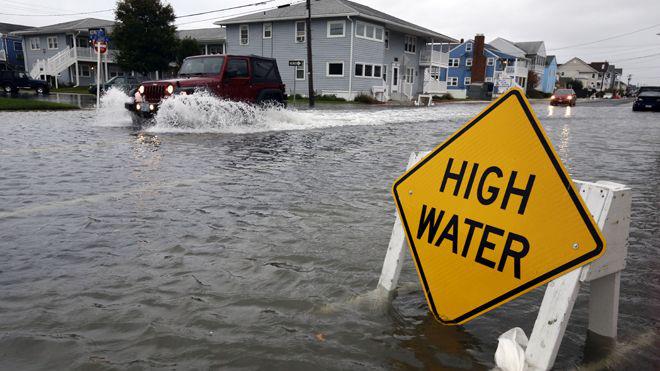Coastal Property Values Already Going Underwater
“Sea level rise already hurting coastal real estate prices” was a story on NPR this weekend by Marie Cusick. It adds to several other recent studies about coastal real estate prices dropping, along with the awareness of increasing flood risk in coastal areas worldwide.
This latest report was about a forthcoming scholarly article in the Journal of Financial Economics, “Disaster on the Horizon: The Price Effect of Sea Level Rise.” Their analysis is that the growing awareness of rising sea level now accounts for a 7% discount to property values for areas that are vulnerable to coastal flooding, compared to those that are not. While I applaud this information, as the saying goes, it’s just the tip of the iceberg.
One does not have to read economic journals to see this message, as these headlines from the Wall Street Journal and CNBC illustrate:
“Flooding Risk Knocks $7 Billion Off Home Values, Study Finds: Property owners in New York, New Jersey and Connecticut are experiencing a loss of real-estate value since 2005”
“Rising seas threaten nearly $1 trillion worth of US homes, and most of them are moderately priced: Zillow”,
Even with this growing concern, a few key points tend to be missed that make the outlook even more sobering:
- Every foot of higher base sea level this century will make a big difference to coastlines worldwide. Just a few vertical feet can push the shoreline more than a mile inland.
- Several feet of sea level rise is now unstoppable due to the warmer average global temperatures. The glaciers and ice sheets on Greenland and Antarctica will continue to melt for decades.
- To try to limit sea level rise to just a few feet, the world must work to reduce the global level of carbon dioxide on an emergency basis worldwide – an effort level considerably beyond what is now underway. To be clear, even if we can find a way to meet the two degree Celsius target of the 2015 Paris Climate Accord, that would mean double the level of warming that has already occurred. Consider the effects of the one-degree rise that has already occurred this century, with more high-heat days, worse wildfires, and melting glaciers, all of which will get worse.
- Flooding is a complex combination of storm surge, heavy rain, runoff, extreme tides, and sea level rise and requires sophisticated vulnerability assessments and climate models.
- The reduction of values does not happen when a property is permanently submerged by the rising sea. The discounting of property values happens as a property floods more and more often, during short-term flooding events, raised ever-higher by the rising sea. In fact, property values start going “underwater” even before the flooding happens. As rising sea level and flood days increase, property values are reduced taking into account inevitable future flooding.
- When real estate values decline due to rising sea level and increased flooding, they will not recover as happens with the usual market declines, since higher sea level will not go down for centuries. It is essentially permanent.
- Buildings and infrastructure often last a century and beyond. Underlying land assets, “the dirt”, are presently not depreciated at all, remaining in-tact on corporate and personal balance sheets. The need to depreciate and expense all of them early will have significant impacts on balance sheets.
- Those assets securing all manner of financial instruments which in turn could destabilize.
- Beyond the financial effects, there are humanitarian, national security, and global trade issues, as well as effects on agriculture, fresh water supplies, and industrial capacity.
The discussion about rising sea level and the challenge to deal with it often sounds like some optional, theoretical issue. It is neither.
The fact that property values are starting to reflect the future risk of flooding is good. Markets are doing what they do well –– anticipating future value, taking into account changes in supply, demand, and risk.
Still, the big devaluation of coastal land and built-assets is not yet in sight. Metaphorically speaking, we are only seeing the tip of the iceberg.
In the real world, when glaciers melt, they can dramatically calve an iceberg. As those floating icebergs melt, they can become unstable, overturning in seconds with colossal force. It’s a valid metaphor for the markets of coastal assets.

